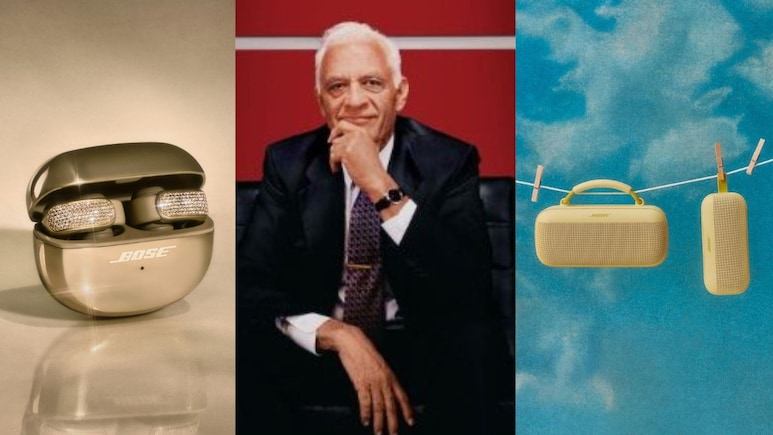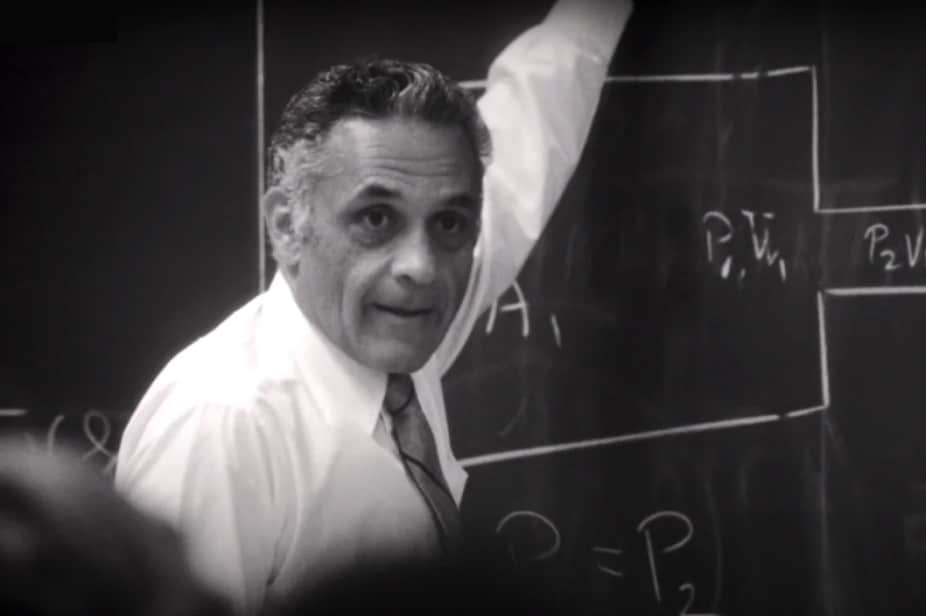
In the 1920s, a young physics student in Bengal, Noni Gopal Bose, was swept up in the fight for India's independence. His activism made him a target of the British authorities, who jailed him and left him with few options but to leave his homeland. With barely any resources, he sailed to America in search of a fresh start.
He found it in Philadelphia, where he married Charlotte Mechlin, a schoolteacher, and began a modest new life. Their son, Amar, was born in 1929. Growing up in the shadow of the Depression years, the boy saw his parents struggle to make ends meet. By his teenage years, he was repairing radios in the family's basement, turning a knack for electronics into much-needed income.
What started as survival soon turned into obsession. Amar's passion for sound carried him to MIT, where disappointment with expensive speakers that failed to capture the thrill of live music, gave him the idea of starting Bose Corporation, a company that defied convention, built its own rules, and transformed the way the world listens.
But let's start from the very beginning.
Teenage Years: Repairing Radios To Help The Family
The 1930s and '40s were not easy times for immigrant families. Business ventures faced restrictions, war disruptions, and economic uncertainty. Young Amar, recognising his parents' financial strain, decided to contribute.
Around the age of 13, he launched a small home enterprise repairing model trains, radios and electronic devices, recruiting school friends to help. At one point he took Fridays off school to service radios full time.
Repairing radios (and achieving success in doing so) taught him practical electronics, persistence, resourcefulness, and the value of listening carefully to what a system fails to do.
"I could build these things and get them to work, but I couldn't design them; I wanted very much to know what the theory was behind all this," Dr Amar Bose would later recall in an interview.
That early exposure to hands-on electronics built the foundation for his later research into sound, acoustics, and systems.
The MIT Years
After finishing high school in Abington, Pennsylvania, Amar Bose enrolled at the Massachusetts Institute of Technology (MIT). He earned his Bachelor of Science in Electrical Engineering in the early 1950s, then continued to a master's and ultimately a doctorate, completing his ScD in 1956 under the supervision of Norbert Wiener and Yuk-Wing Lee.

Bose was in MIT as a faculty for 45 years. Photo: MIT
His doctoral work lay in nonlinear systems, but alongside his formal research, he began exploring sound and acoustics. After getting his doctorate, he joined MIT's faculty and started a research programme in physical acoustics and psychoacoustics, where he worked for 45 years (and founded Bose Corporation during that time). His academic background directly helped him to lay the foundation of the Bose corporation.
The High-End Disappointment
It was around this time that he bought a high-end hi-fi speaker system to celebrate finishing his doctorate - but was deeply disappointed by its sound. He recalled, in an interview with TechCrunch, "I went and checked the specifications. Like all engineers, I thought specifications meant everything. I brought the system home, and I never was able to play more than three or four minutes of a record to the people there. Something has gone wrong!"
He found that speakers that measured well on paper frequently failed to reproduce the live-concert experience. That contradiction challenged him to ask: Why do speakers that satisfy technical measurements not necessarily sound true?
In the TechCrunch interview years later, he quipped, "What could measure so well and not sound good?" He went further, "We don't publish specifications on any product today, we don't know of any measurements that actually determine anything about a product, and, measurements are phony, in general, as they are printed."
So, he began his work.
To test and refine ideas, he borrowed commercially available speakers through a connection he made with RadioShack, comparing their real performance against measured claims. He found many discrepancies.
He even involved musicians, bringing them into blind listening tests with different speakers, and found the results were inconsistent, which further unnerved any naive reliance on specs alone.
From Thesis To Founding Bose Corporation
In 1964, Amar Bose launched the Bose Corporation, not by licensing his ideas, but by creating a company committed to pushing the boundaries of what sound systems could do.
The first offices were modest: two employees (both former MIT colleagues) and a small workshop in Natick, Massachusetts. During the day, they did contract work for government and military clients; at night, Bose and his team experimented with acoustics and speaker designs.
One of Bose's earliest breakthroughs was the 901 Direct/Reflecting speaker system (introduced in 1968). It used multiple identical full-range driver units, some facing forward, others facing backward (to bounce off the walls), aimed to recreate the diffuse quality of concert hall acoustics. This was bold, unconventional, and challenged accepted speaker design norms.
Launching such radical systems wasn't easy.
In an interview, Bose recounted that early on, his first hire (a longtime friend) threatened to quit if they went ahead with their unconventional designs. The industry at large was sceptical: some prominent publications even disparaged the 901, claiming it made sound wander - and that cheap alternative speakers outperformed it - which nearly bankrupted Bose.
But Bose persisted. He financed legal battles, challenged critics, and emphasised letting people hear the product rather than rely on published specs. Over time, the 901 and subsequent systems earned acclaim, and Bose built a reputation for superior audio innovation.
The Patent Battle
Bose himself held several patents in acoustics, non-linear systems, and signal processing, and much of the company's reputation was built on that intellectual property.
At the same time, Bose often drew criticism from the audio community. Reviewers and rivals complained about the company's refusal to publish detailed specifications, accusing Bose of prioritising marketing over transparency.
Amar Bose, however, defended this position with conviction.
"We don't publish specifications on any product today. We don't know of any measurements that actually determine anything about a product."
This contrarian stance made Bose both controversial and distinctive. His insistence on subjective listening tests over technical spec sheets helped carve out a niche where the brand's reputation rested on user experience rather than numbers alone.
The Birth Of Noise Cancellation
While Bose Corporation's early successes lay in loudspeakers, Amar Bose's greatest breakthrough would come in headphones - and in particular, active noise cancellation (ANC). The idea was conceived in 1978.
On a long flight from Europe to Boston, Bose tried the airline's provided headphones - but found that the background engine noise overwhelmed the music, making listening nearly impossible.
Amid that frustration, he sketched a concept for a system that included microphones to detect ambient sound, electronics to compute an opposing waveform, and drivers to cancel incoming noise before it reached the listener's ears.
He assembled a team at Bose to pursue the idea. But progress was slow: it took over 15 years of research, iteration and investment (reportedly tens of millions of dollars) before a viable product emerged.
In 1989, Bose introduced its first commercial noise-cancelling aviation headset, marketed initially to pilots.
A landmark moment came when pilots Dick Rutan and Jeana Yeager used Bose prototype headsets during their non-stop around-the-world flight to protect their hearing in the extremely noisy cockpit, proof that the technology could work in real, extreme conditions.
From aviator gear, noise cancellation soon expanded to consumer headphones. The QuietComfort series became iconic, bringing ANC to travellers, commuters and audio enthusiasts.
From Niche to Global Benchmark
Under Amar Bose's leadership, Bose Corporation remained privately held, never going public. In 2011, he donated a majority of the company's non-voting shares to MIT; the dividend income from these shares supports MIT's research and educational mission.
Today, beyond personal use (including adoption by pop-culture favorites), Bose provides factory‑installed audio systems to a wide range of automakers worldwide - including premium brands like Porsche and select Audi models - with availability varying by model, trim, and market year.
Beyond automobiles, Bose is widely used in aviation, primarily in the form of pilot headsets and flight‑deck audio accessories.
Bose died on July 12, 2013, at age 83. Even after his death, the company has continued pushing innovation: compact wireless ANC earbuds, automotive sound systems, professional audio, and headphones remain among the most respected in the world.
Today, Bose is among the first names people recall when one speaks of noise-cancelling headphones or premium sound systems.
Track Latest News Live on NDTV.com and get news updates from India and around the world

